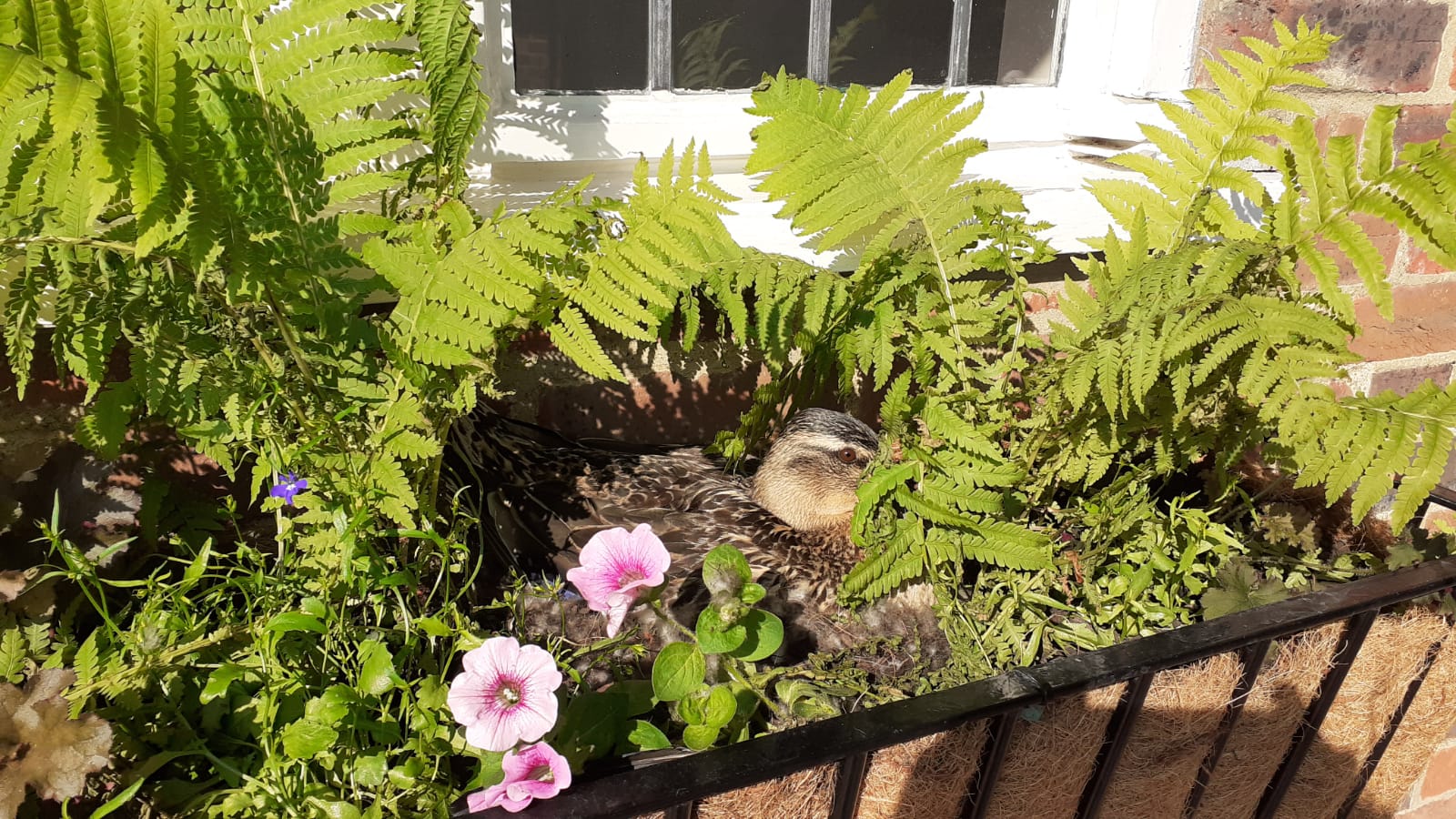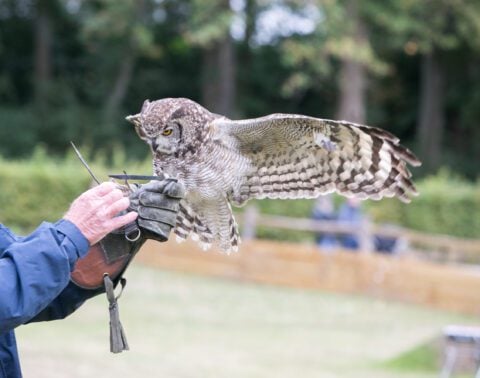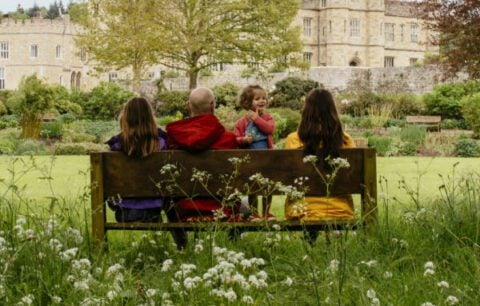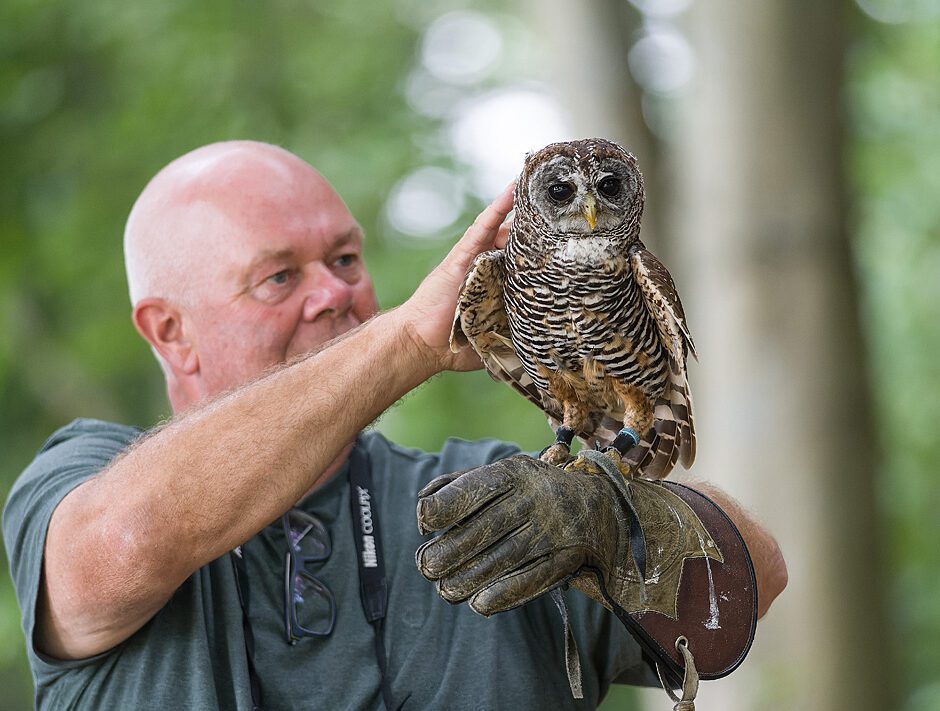July, and time to enjoy the fruits of labour – Our blog post this month is written by Garden Supervisor Franziska Harmann, who leads Gardeners Julie and Linda and a dedicated team of volunteers looking after the formal areas. Here are Franziska’s thoughts on July at Leeds Castle:
July is often one of the hottest months of the year, and how we long for it this year after these unusually cold and wet spring months! Fingers crossed for a hotter or at least a nice warm summer. July is also a month when you can relax as a gardener, sit down in a shady spot and enjoy the benefits of the hard work you have put in over the last months.
At Leeds Castle, there are so many of these lovely corners, many of them secluded in the comfortable shade of the Lady Baillie garden, where you can sit down, relax, and have a picnic. Here you can enjoy the fantastic views over the lake surrounded by impressive palms, succulents and flowering banana plants. It almost feels as if you are in Italy amongst the Mediterranean-style planting. What a treat in a year where a lot of us won’t have the chance to travel overseas.
If you are a garden enthusiast or a budding gardener with a newly found interest, there are always new things to discover in the adjacent Culpeper garden, first designed by Russel Page. The warm June weather and subsequent rain have been ideal growing conditions for all the self-seeders so typical of a ‘cottage garden’, such as hollyhocks, poppies in all shades and forms, and the feathery foliage of bronze fennel. The hollyhocks pop up everywhere on the borders, with cheerful colours amongst the fading flower heads of the impressive Allium christophii, summer flowering perennials like penstemons and salvias, clematis, shrubs and climbing roses. The borders are so rich in colour and texture at this time of the year, and an insect and bee haven.
This is also the month when you can actively prolong the flowering season of your herbaceous perennials and roses through deadheading. As long as a plant isn’t allowed to produce seeds, it will continue to flower. Some of the geraniums, which were cut back to ground level after the first flush, have begun to shoot again for their second flush in September. This method keeps them nice and tidy through the summer and prevents them from flopping and dying at the centre.
Remember to keep a close eye on your roses and their pests this time of the year. If you feel the need to spray them because of sucking insects like aphids, it is best to spray with an oil or soap-based insecticide to protect beneficial insects like bees. If you are lucky enough to have to visit blue tits in your garden, they love aphids and will pick them off, as will a nearby wasp colony.
Fungal diseases like mildew are all weather dependent and thrive in a humid and hot summer. It is very important to strengthen your roses with regular feeding and, if necessary, watering. It is best to give them a good watering at the base of the plant in dry spells. It is also important to pick off infected leaves and to provide a good airflow with selective pruning in the spring.
Whilst you are enjoying your lunch and ice cream in the stable yard, have a look at our little allotment garden in front of the restaurant, which was planted at the beginning of June with Romanesco cauliflower, ruby Swiss chard and lots of different pumpkins and courgette varieties, which after a slow start begin to cover more ground. French marigold was planted amongst them as a deterrent for aphids due to their pungent smell. 
One of the ducks managed to sneak through and laid her eggs in one of the window boxes. It won‘t be long now until we will see hatched ducklings emerging underneath her.
It was fantastic to see so many families during half term and wildflower week enjoying themselves playing and picnicking on the lawns near the pavilion.
The pavilion border got extra attention during recent weeks with lots of helping volunteer hands working through the long borders weeds. Keep an eye on this border during July and August when the colourful annual flowering meadow mix ‘Candy‘, which was sown mid-June, will start to flower.
I would like to mention and thank our fantastic gardening volunteers, who are a huge asset and help in keeping the gardens as well-kept as they are.













































